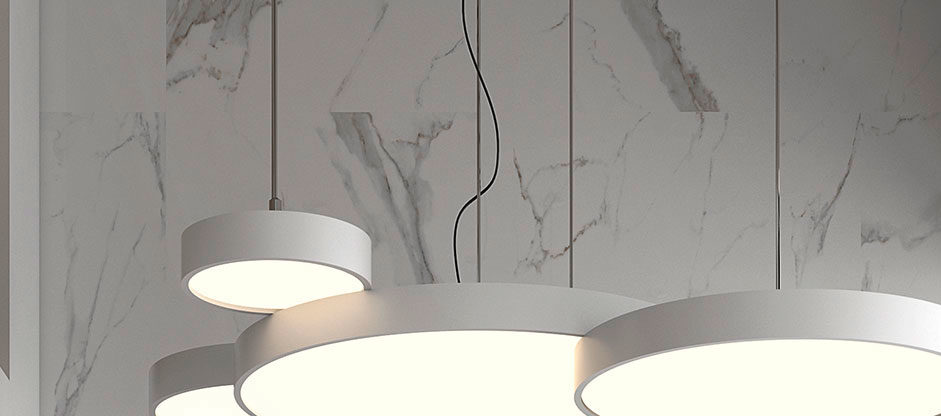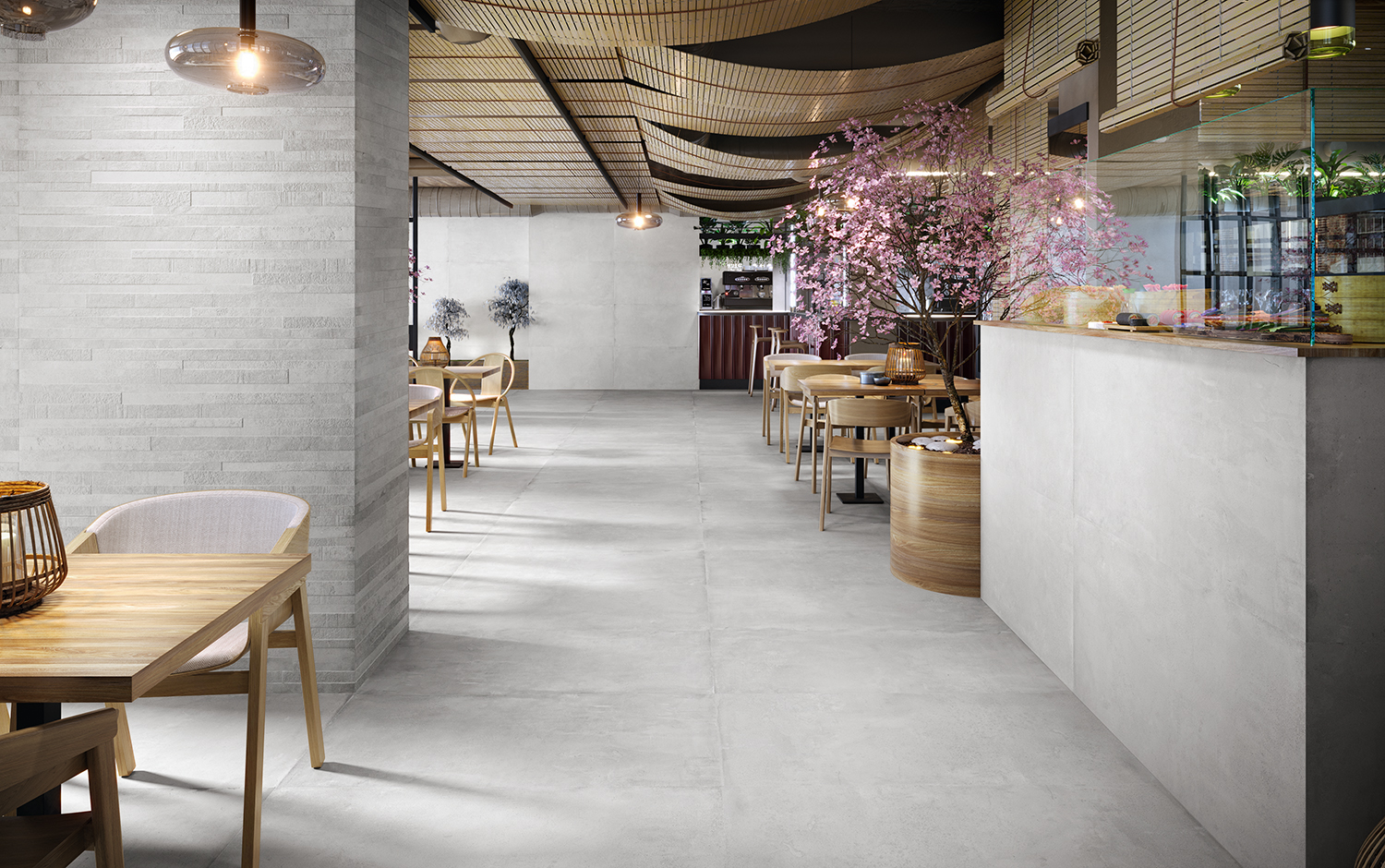Never had a hybrid trend been so successful. The style of order and harmony par excellence has arrived this 2022 and is here to stay. And it’s not just us saying it, Pinterest is too. According to the image-sharing site, Japandi has once again taken over the interior design world. After a slight dip in popularity — for years it was one of the most sought-after trends —, this season it’s reclaimed its spot on top of the most-searched styles list by interior designers and design professionals. Given its growing success, we couldn’t have picked a better style to kick off our ‘12 Months. 12 Styles’ section. Discover the keys to the style that combines the best of Nordic design with the aesthetics of the Empire of the Rising Sun.
What is Japandi?
As its name suggests, Japandi is a portmanteau that represents the marriage between Japanese philosophy and Scandinavian design. Two distinctive yet very similar decorative styles, with features that have managed to set up the perfect partnership in the living spaces of the new decade. Heavily influenced by the pandemic, the interior design of 2022 focuses on enhancing our home as the setting of the best moments of our lives. In this very humanistic vision of home interiors, the warmth of the Nordic style and the Zen harmony of Japanese design take centre stage. Two musts for cosy homes, which find in Japandi the perfect decorative guide.
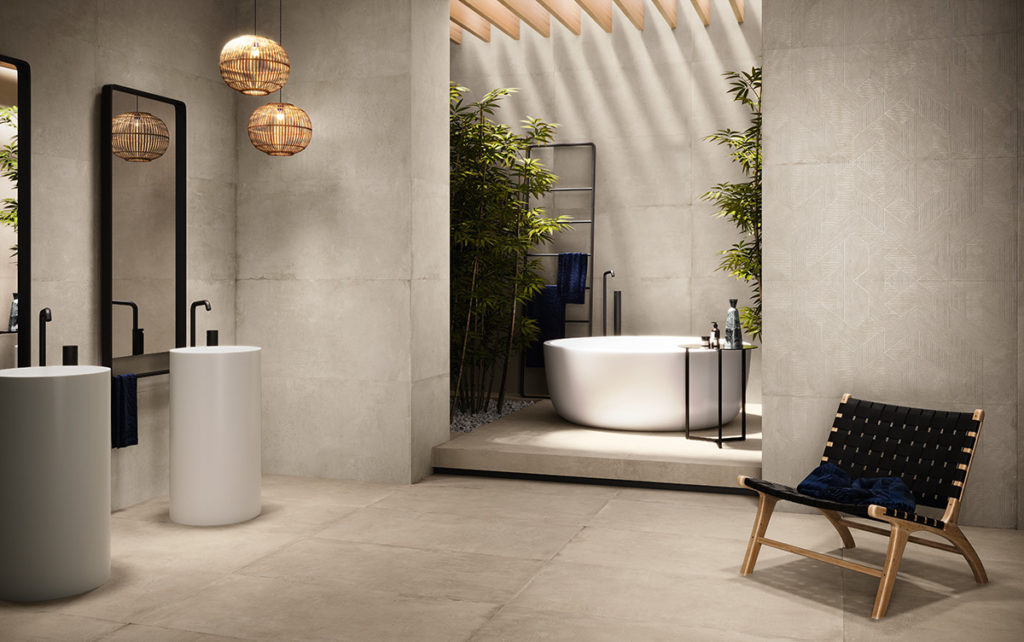
Bathroom featuring the Tokyo collection by ITT Ceramic. A cement-heavy design in trendy colours such as nude and make-up creates a modern, relaxed atmosphere in contemporary homes. The geometric relief tile is Aware Nude Matt, 59.5×119.2R.
Tips for Japandi-style houses: less is more and how taste lies in simplicity
Just like in Japan and the Scandinavian countries of northern Europe, the Japandi style embraces a minimalist approach to design. This doesn’t mean these spaces lack personality — quite the opposite, since you can decorate to suit your own taste. But it is true that Japandi hails the simplicity, calm and serenity of quiet and uncluttered environments. Remember Japanese sensation Marie Kondo from Netflix’s The Joy of Tidying? She underlines the importance of sticking to nothing more than the essential, and that’s exactly what Japandi preaches: aim for functionality and discard anything superfluous.
The Japandi style favours functionality and order. There’s no object that doesn’t fulfil a purpose. Not the case in your home? Get rid of it!
Order and spaciousness
Order and spaciousness are two essential terms in Japandi décor. To meet these requirements, opt for fluid, roomy and interconnected spaces that make the most out of natural light and strengthen the connections between inhabitants. It’s important that decorative elements are placed to enhance this fluidity, and to remove any items that may restrict the flow and visual connection. You wouldn’t want to play against Feng Shui energies, would you?
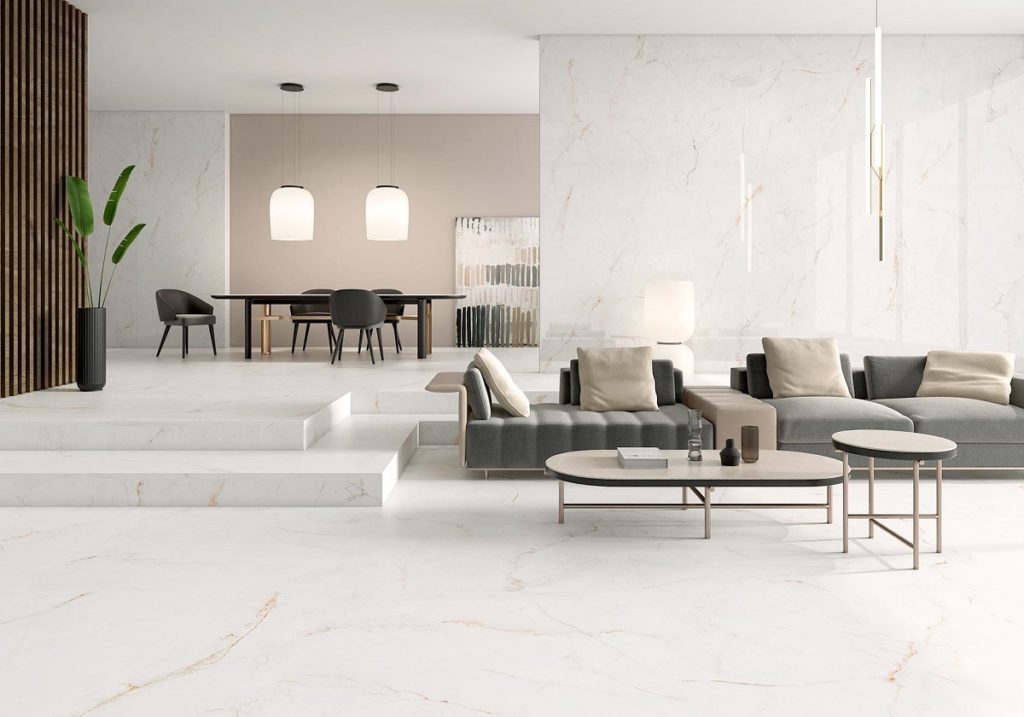
The spaces are opened to bring fluidity into the design and take advantage of the lighting and available space. A very Japandi room with our Syrac Satin 120x120R marble collection, Syrac 33×120 step and Syrac Polished 60x120R.
If you still want to reserve some rooms for private use, choose semi-walls, screens, glass enclosures or wooden panels, just like you would find in a Japanese home. These types of enclosures for interior/exterior delimitation can also allow you to bring in more light and integrate nature into the décor, as if it were a painting or mural.
Materials
Based on the harmony of nature and the foundations of Wabi-sabi, which embraces the perfectly imperfect, Japandi turns to natural materials, such as wood, stone, rattan, bamboo, fabrics such as linen and decorative elements made of ceramic and glass.
For the structure, you can opt for natural materials or choose porcelain for maximum resistance, durability and easy cleaning, especially in more challenging rooms, such as the kitchen and bathroom. Nowadays, thanks to advances in manufacturing technology, you can find ceramics that perfectly mimic natural materials, such as wood or stone. As for wood, there are more authentic, rustic types of wood, full of grooves and knots, and others that offer a more linear look, ideal for the order and balance demanded by the Japandi style.
In terms of ceramic cladding, low walls, linear ceramics and geometric frameworks reminiscent of Japanese games such as Mikado are all in vogue. Mathematical perfection for accent walls.
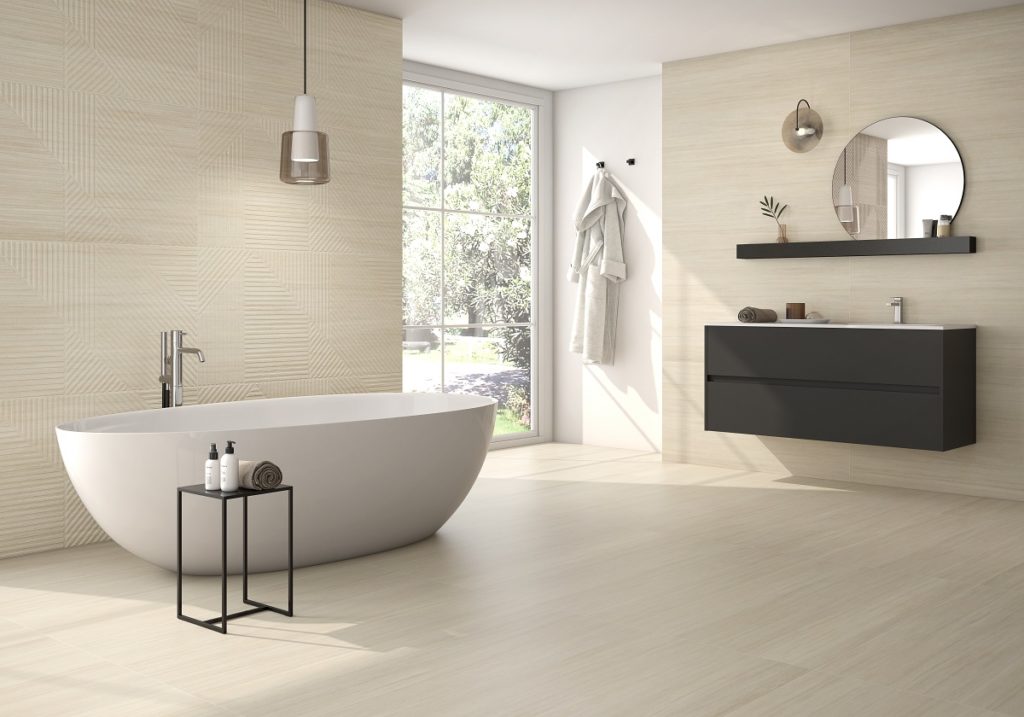
In this Japandi-style bathroom, the exterior seeps into the interior through a large window. In addition, the bathtub space has been accentuated with geometric relief tile Soleil Natural Decor Matt 59.5×119.2R.
The era of neutral colours
Never has there been a more golden age of neutrals than today. And it’s not surprising, given their potential to bring peace and calm to spaces. In an era defined by stress, the home has become a place to seek refuge, a sanctuary in which to escape from the burdens of everyday life and take a breath, even if for just a moment. Japandi takes the chromatic palettes of Scandi countries, featuring whites, greys and soft pastels; and blends them with hues from Japanese design, such as earth tones, ochre, beige and gold. Black brush strokes also take centre stage in the new Japandi style, and greens find their space as a powerful ode to Mother Earth.

Blossom by Creative is one of the most Japandi-esque series we have due to its muted colours and decoration that’s reminiscent of cherry blossom. It comes in a hexagonal format and there are up to 24 different pieces available for you to create the composition you want. Also available in blue shades. 23×27.
Colour contrasts are another important feature of this interior design style. Would you dare to mix wood shades — Scandi-style light wood vs the dark wood of Japandi? How about mixing different stone hues, or combining stone and wood tiles in the same space, such as the bathroom? Create, create and create.
Plants as a natural form of expression
Decoratively speaking, the Japandi style tends to embrace freshness but without going overboard. Essential pieces of hand-crafted, wooden, finished furniture that are low to the ground coexist with ceramic ornaments, iconic pieces of glass, plus cushions and textiles made of natural fibres and in serene colours.
But if there’s one thing that defines Japandi-style décor, it’s plants. Bringing an element of nature and fresh air into the room is a must in the Japandi style bible. Be sure not to go over the top, though. Pick out a couple of simple-leaf or leafy plants you really like and place them around your room. Ready to turn your project into a sanctuary?

A very Japandi bathroom in which plants, subtly integrated into the room, provide that fresh airiness that’s so needed in the space. Nuvole Gray Matt 59.5×59.5R + Nuvole Gray Matt 29.5x90R + Nuvole Gray Decor Matt 29.5x90R.
